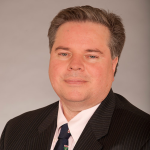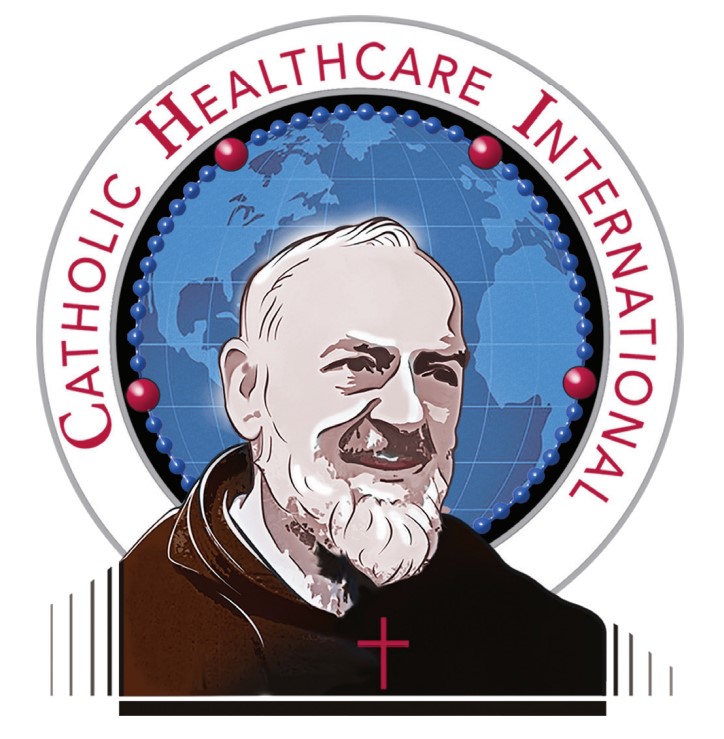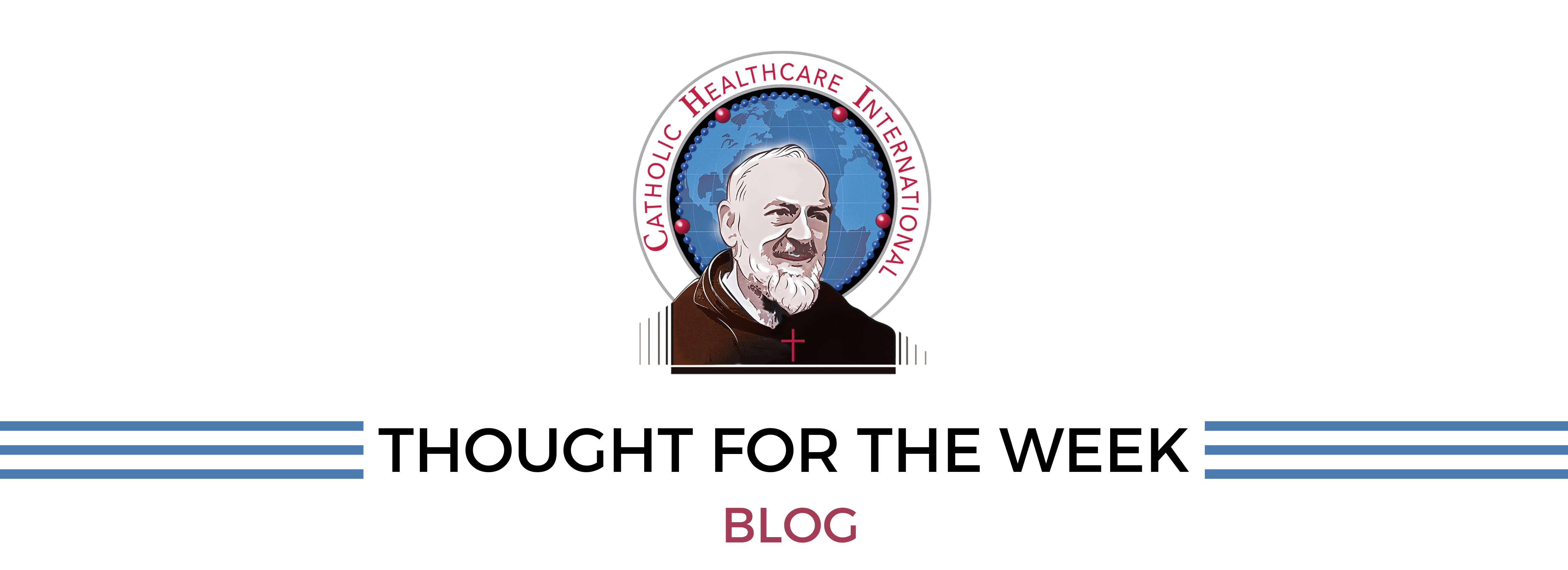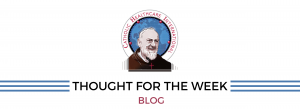|
Listen to the Thought for the Week
Getting your Trinity Audio player ready...
|
The Mis-education of American Medicine
Catholic Healthcare International is developing a faithful Catholic medical school. Among the questions asked about this venture is, why? There are currently 154 medical schools in the US offering the MD degree and an additional 38 osteopathic medical schools offering the DO degree at 57 locations (1). All-in-all, that is 211 institutions of higher education in the US offering medical degrees and graduating over 28,300 MD students and 7,300 DO students each year, in addition to about 7,500 foreign medical graduates entering the US yearly (2, 3, 4). That seems like a lot, but, in fact, it is not keeping pace with the growth of the population needing health care and the attrition of practicing physicians through retirement. Not only is the baby boomer generation entering retirement age, but they are also sicker, requiring more medical care and living longer than ever before in history, COVID notwithstanding. All of this adds up to a significant US physician shortage over the next few decades. Depending on who runs the numbers, by 2034 the US will be between 37,000 and 125,000 physicians short, particularly in rural and underserved areas and in specialties needed the most, such as family and internal medicine, pediatrics, OB/GYN, and psychiatry (5).
Additionally, there are currently nine Catholic medical schools in the US, seven offering the MD degree and two DO. There are numerous other secular and faith-based medical schools around the US in various stages of development. The only truly faithful US medical school currently is the Liberty University College of Osteopathic Medicine in Virginia, a Christian Evangelical institution. The Catholic medical schools are only nominally Catholic and even go out of their way to affirm their secularism.
The issue is not the number of schools, per se, the issue centers on the schools’ priorities and curricular content. American higher education, particularly medical education is somewhere to the left of Fidel Castro on the political spectrum. Medicine has gone from an applied science, treating the sick and relieving suffering, to (at least to educators), a tool to achieve social justice, address racism, colonialism, oppression, and every other woke checklist term in society. In the eyes of ivory tower academia, physicians should resemble John Reed and Stokely Carmichael, more than Marcus Welby and Gregory House, MD. The diagnosis and management of complex medical problems, such as cancer and immunological disorders, has taken a backseat to combatting gender oppression and fighting microaggressions.
In years past, medical students took the Hippocratic Oath, from the ancient Greek medical text:
“I swear by Apollo the physician, and Asclepius, and Hygieia and Panacea and all the gods and goddesses as my witnesses, that, according to my ability and judgement, I will keep this Oath and this contract:
To hold him who taught me this art equally dear to me as my parents, to be a partner in life with him, and to fulfill his needs when required; to look upon his offspring as equals to my own siblings, and to teach them this art, if they shall wish to learn it, without fee or contract; and that by the set rules, lectures, and every other mode of instruction, I will impart a knowledge of the art to my own sons, and those of my teachers, and to students bound by this contract and having sworn this Oath to the law of medicine, but to no others.
I will use those dietary regimens which will benefit my patients according to my greatest ability and judgement, and I will do no harm or injustice to them.
I will not give a lethal drug to anyone if I am asked, nor will I advise such a plan; and similarly I will not give a woman a pessary to cause an abortion.
In purity and according to divine law will I carry out my life and my art.
I will not use the knife, even upon those suffering from stones, but I will leave this to those who are trained in this craft.
Into whatever homes I go, I will enter them for the benefit of the sick, avoiding any voluntary act of impropriety or corruption, including the seduction of women or men, whether they are free men or slaves.
Whatever I see or hear in the lives of my patients, whether in connection with my professional practice or not, which ought not to be spoken of outside, I will keep secret, as considering all such things to be private.
So long as I maintain this Oath faithfully and without corruption, may it be granted to me to partake of life fully and the practice of my art, gaining the respect of all men for all time. However, should I transgress this Oath and violate it, may the opposite be my fate (6).”
Osteopathic students take a very similar oath, the Osteopathic Oath, espousing similar ideals, such as protecting patient confidence, using proven methods of care and not administering deadly drugs (7).
It should be obvious that, in our brave new world, these oaths have to go. They explicitly prohibit abortion and euthanasia, the foremost sacraments in our contemporary culture of death. (It is an inconvenient truth for the pro-abortion cheerleaders that, from the time of ancient Greece, abortion was considered murder of an innocent human being and abhorrent to civilized society. The idea that the drafters of the US Constitution would imagine there being a “right” to abortion is, simply, laughable.) Unlike other professional programs, medical students are, in large part, trained and educated by non-medical educators, hence, the far-left liberalism of American medical schools, structured by professional educators like “Dr.” Jill Biden. The First Lady has an Ed.D. degree, a doctorate in education, with Master’s and Bachelor’s degrees in English. (Despite what the fawning, drive-by media portrays, Dr. Biden will not soon (probably) get the Nobel Prize in Medicine or patch up a nasty gunshot wound to the chest but might be a great choice for a critically ill essay on syntax, grammar, and pronouns.) While lawyers are educated by lawyers, engineers are educated by engineers, and nurses are educated by nurses, much of physician education is conducted by science PhDs, that is, professional teachers and medical curriculum is structured by the EdDs of the world. This design, combined with young liberalism and idealism, makes medical schools ground zero for inclusive, sustainable, secular, humanist, and other popular ideologies.
As we have often discussed in these pages, physicians are complicit, ready, willing, and able participants in our culture of death, abortion, and euthanasia. Consider the changes to the Hippocratic Oath. This year, at the University of (the people’s republic of) Minnesota, the entering medical students created their own oath. For those of you expecting a bunch of nonsensical, jingoistic word-salad, you will not be disappointed. Here are a few excerpts (the reference will take you to the entire text if you feel the need to be punished):
“Our institution is located on Dakota land. Today many indigenous people throughout the state of Minnesota, including the Dakota and the Ojibwe call the Twin Cities home.
We also recognize this acknowledgment is not enough. We commit to uprooting the legacy and perpetuation of structural violence deeply embedded within the health care system.
We recognize inequities built by past and present traumas rooted in white supremacy, colonialism, the gender binary, ableism and all forms of oppression.
As we enter this profession with opportunity for growth, we commit to promoting a culture of antiracism, listening and amplifying voices for positive change.
We pledge to honor all indigenous ways of healing that have been historically marginalized by western medicine.”(8)
A lot of buzzwords there, “colonialism,” “gender binary,” “ableism,” “oppression,” “antiracism,” and, of course, “marginalized indigenous healing,” because smudge sticks have so unfairly been ignored in the management of brain tumors. (For those of you playing woke bingo, I think all that is missing is “pregnant people” and “persons experiencing homelessness” along with a Ukrainian flag and rainbow emojis.) Curiously, “do no harm,” denying abortion, and not prescribing deadly drugs were omitted. I guess they ran out of space.
You may recall that we previously discussed the White Coat Ceremony at the University of Michigan, where 60% of the students walked out on the keynote speaker because of her previously expressed pro-life views (9). So, on an important milestone, before family and friends, because the speaker had previously expressed pro-life views, these future physicians rudely stood, turned, and walked out during an otherwise benign talk meant to inspire them as future healers. (Not sure students are a better choice for oath writing than Hippocrates, but what do I know?)
And now it comes full circle. The New England Journal of Medicine is one of the most important journals in medical literature. It has a reputation for publishing the most important scientific articles that shape the methods of medical science and practice. For many physicians and scientists, having an article published in the New England Journal is the equivalent of an Academy Award. Recently, the New England Journal published an article from a group at the University of California, San Francisco (UCSF) medical school, also widely considered to be one of the best and most prestigious medical schools in the world. These are the people that are conducting the orchestra of American healthcare. Maybe that is the problem.
The article from the group at UCSF was titled, “Racial Affinity Group Caucusing in Medical Education — A Key Supplement to Antiracism Curricula”(10). Basically, this group from UCSF is arguing that medical students should be segregated into racial groups (they specify Black, Indigenous, and all people of color, except White, I guess). These separate but equal groups are abbreviated RAGC, for Racial Affinity Group Caucus. The premise of the article is that students are traumatized and unable to express openly or discuss their true feelings in mixed groups and should be segregated so they can learn better and not hide their feelings. I swear, I am not making this up. The best way, in the mind of the UCSF medical school, to combat racism is to racially segregate students. Is this not reminiscent of George Wallace’s, “Segregation now, segregation forever! (11)” or Ross Barnett’s “The Good Lord was the original segregationist. He put the black man in Africa. … He made us white because he wanted us white, and He intended that we should stay that way” (12)?
Here are a few sentences from the New England Journal Article:
“Used as part of a broader antiracism and antioppression curriculum, racial affinity group caucusing engages participants in critical introspection through the lens of their own racialized experience and enhances learning by building community and encouraging praxis, the integration of theory, self-reflection, and action.”
“Founded on legacies of colonialism and racism, medical education has historically centered White learners and continues to perpetuate structural racism. Pedagogical approaches often center White learners and ignore the differential impact of content on BIPOC learners (Black, Indigenous, or people of color).”
“Immersion in the existing medical education system can therefore be retraumatizing, resulting in imposter syndrome, heightened anxiety, and a reduced sense of belonging.”
“In a space without White people, BIPOC participants can bring their whole selves, heal from racial trauma together, and identify strategies for addressing structural racism (10) .”
That all seems pretty racist and offensive. Not only does it ascribe the entire medical education system to be structured on a foundation of racism, it assumes that all Black and other Persons of Color are so fragile that they cannot function in a group that contains White people. Generalizing a behavior or an idea to an entire group, simply based on skin color, is the very definition of racism. Is it somehow more acceptable when said by San Francisco elites than in a Southern Mississippi accent? This is what medical “critical race theory” looks like.
(I recommend you go to the reference and read the article in its entirety. It is like a root canal, painful, but ultimately good for you, and a primer of everything that is wrong with our mis-educational system.)
There is no doubt whatsoever that structural racialism exists in medical education and multiple aspects of society. For example, much of the decision of whether a student should be accepted to medical school is based on the results of the MCAT, or Medical College Admission Test. The MCAT is a standardized, 7-hour-long test of knowledge in the basic sciences, including biology, chemistry, biochemistry, and physics. The MCAT is designed and written by individuals from a high educational background with a legacy of academic excellence. Numerous studies have shown that scoring well on the MCAT correlates very well with one’s socioeconomic status (13). Beyond a certain minimum level of competency, however, the MCAT score correlates with nothing else and certainly not with success in residency or the practice of medicine (13). And yet, year after year, the MCAT is the most important cutoff for medical school admission. Some would argue MCAT is an important marker of fitness to be a physician. That is simply not true.
Medical school is simultaneously hard and easy. Each quanta of knowledge in medical school is not, in itself, terribly complex. It is not philosophy or theoretical physics. It is a fairly fixed and limited body of knowledge. Anyone with the intellectual capacity to succeed in high school can understand each individual quanta of medical school knowledge. The issue becomes the sheer amount of knowledge that must be learned and mastered. One or two bits of knowledge is easy, 100 or 200 thousand bits of knowledge is very difficult. That is the challenge of medical school. Another nonsensical marker of success in medical school is performance in college-level organic chemistry. The conventional wisdom is, if someone can do well in organic chemistry, they can do well in medical school. I suppose that may be true, but aside from a very superficial level, organic chemistry has very little to do with medical school and the practice of medicine.
Again, this paradigm of organic chemistry as a surrogate marker for success comes from individuals with a high socioeconomic status and substantial academic background. It should be no surprise that these surrogate markers eliminate people from underrepresented and underprivileged backgrounds, especially people of color. That is structural racialism. It is not necessarily designed to exclude people of color, but that is the unintended consequence, as the barriers to entry are established by people from a very different life perspective than traditionally underrepresented students. No one flunks out of medical school because they are intellectually incapable. People flunk out because they lack the study and time management skills to deal with the large volume of information before them. They flunk out because of immaturity and bad habits. They flunk out because they are out at bars and watching TV instead of putting in the hard and boring study hours.
There is also no doubt that diversity in the physician workforce is important. African Americans suffer significant disparities in medical care and outcome (14). A 2005 report from the Institute of Medicine (NAM) found that the poverty in which Black people disproportionately live cannot account for the fact that Black people are sicker and have shorter life spans than their White counterparts. “Racial and ethnic minorities receive lower-quality health care than White people—even when insurance status, income, age, and severity of conditions are comparable.” By “lower-quality health care,” NAM meant the concrete, inferior care that physicians give their Black patients. NAM reported that minority persons are less likely than White persons to be given appropriate cardiac care, to receive kidney dialysis or transplants, and to receive the best treatments for stroke, cancer, or AIDS. It concluded by describing an “uncomfortable” reality: “Some people in the United States were more likely to die from cancer, heart disease, and diabetes simply because of their race or ethnicity, not just because they lack access to health care (14).”
This is an important and real problem, but the solution is not to segregate medical students and become immersed in the woke ideology of microaggressions and safe spaces. Medical schools do the same things over and over again, using the same markers of MCAT and organic chemistry, and wonder why they are not making progress in physician diversity. Every medical school wants to brag that they have the highest MCAT scores and highest applicant GPAs, which automatically screen out qualified students of color from underprivileged backgrounds. Real change only happens when medical school admissions committees are willing to look beyond the surrogate markers and admit students who are qualified, but not necessarily the most competitive on these markers, while taking into account their overall fitness for the practice of medicine and contribution to their communities. In 2016, I started a medical school in New Mexico that emphasized this “holistic” admission criteria, with a mission to improve the region’s health and diversify the physician workforce. We admitted students who were qualified, but also considered other factors, such as socioeconomic background and service to the community. This school immediately became the most diverse osteopathic medical school in the US and student attrition was within normal limits and not related to MCAT or GPA. This all takes time, money and effort. Anyone can teach medical students who come from a privileged background and have a high GPA and MCAT; it takes more work to help students succeed who have no background in study skills, time management or testmanship. It is doable and rewarding, but it takes teams of faculty, learning specialists and administrators to accomplish. It may be more difficult for these individuals to complete medical school, but in the end, they are better and more satisfied physicians who provide care in their communities where it is needed most.
The Saint Padre Pio Institute for the Relief of Suffering, School of Osteopathic Medicine (proposed) is being developed to meet a need for faithful physicians to practice under the magisterium of the Holy Catholic Church, in accordance with our values and ethical principles. We seek a diverse and pious community of learners, united in the knowledge that all people are created in the image and likeness of God, equally valued, precious and worthy, from conception to natural death, regardless of color, economic background, disability and every other adjective or modifier. We will evangelize the Good News of the Lord Jesus Christ through our graduates’ practice of medicine and inspire other medical schools, particularly the nine nominally “Catholic” schools, to do likewise.
This is the Way.
“And Jesus went about all the cities and villages, teaching in their synagogues and preaching the gospel of the kingdom, and healing every disease and every infirmity. When he saw the crowds, he had compassion for them, because they were harassed and helpless, like sheep without a shepherd. Then he said to his disciples, “The harvest is plentiful, but the laborers are few; pray therefore the Lord of the harvest to send out laborers into his harvest.”
Matthew 9:35-38
This concludes the audio portion of this article. Thank you for listening.

George Mychaskiw II, DO, FAAP, FACOP, FASA
Founding President
Saint Padre Pio Institute for the Relief of Suffering
School of Osteopathic Medicine
References
https://bemoacademicconsulting.com/blog/medical-schools-in-us#:~:text=There%20are%20154%20medical%20schools,US%20medical%20school%20for%20you
https://www.statista.com/statistics/1270398/total-medical-school-graduates-in-the-us/#:~:text=In%202021%2C%20the%20number%20of,followed%20by%20Texas%20and%20California.
https://osteopathic.org/about/aoa-statistics/#:~:text=Includes%20all%20living%20DOs%2C%20including,the%202022%2D23%20academic%20year.
https://www.ecfmg.org/news/2021/03/19/match-day-adds-7500-international-medical-graduates-to-u-s-gme-programs/
https://www.ama-assn.org/practice-management/sustainability/doctor-shortages-are-here-and-they-ll-get-worse-if-we-don-t-act
https://www.nlm.nih.gov/hmd/greek/greek_oath.html#:~:text=The%20Hippocratic%20Oath%20(Ορκος)%20is,number%20of%20professional%20ethical%20standards.
https://osteopathic.org/about/leadership/aoa-governance-documents/osteopathic-oath/
https://www.dailymail.co.uk/news/article-11348775/Top-doctor-slams-University-Minnesota-medical-school-abandoning-Hippocratic-oath.html#:~:text=The%20oath%20said%3A%20%27We%20commit,and%20all%20forms%20of%20oppression.
https://www.nbcnews.com/news/us-news/dozens-walk-university-michigan-white-coat-ceremony-protest-anti-abort-rcna39834
https://www.nejm.org/doi/full/10.1056/NEJMp2212866
https://www.blackpast.org/african-american-history/speeches-african-american-history/1963-george-wallace-segregation-now-segregation-forever/
Memphis Commercial Appeal, September 12, 1963
https://msms.tiberhealth.com/2022/07/14/does-the-mcat-predict-success-in-medical-school/
https://www.americanbar.org/groups/crsj/publications/human_rights_magazine_home/the-state-of-healthcare-in-the-united-states/racial-disparities-in-health-care/


